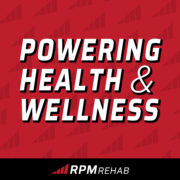Invisible Injuries and the Power of Holistic Healthcare
Irwin Altman Ph.D., Neuropsychologist and National Director of Outcomes for Collage Rehabilitation Partners, emphasizes the importance of psychological factors in rehabilitation of complex head injury patients.
Irwin Altman vividly recalls the moment he realized neuropsychology was a career he wanted to pursue. He had enrolled in a neuropsychology course as an undergraduate student at McGill University in Montreal. The passion and animation of his professor awakened his interest and inspired him to pursue a career in this discipline.
“I remember just walking out of there and saying, that’s what I want to be when I grow up,” Altman recalled. After over 37 years in the world of neurorehabilitation, it’s clear that his passion is like that of his undergraduate professor.
In this episode, Altman discusses the importance of neuropsychology in treating patients holistically, and how understanding a patient’s life history and personality can enhance outcomes of the physical medicine rehabilitation disciplines, such as physical therapy.
Invisible Injuries
When explaining what neuropsychology is, Altman describes how people don’t always understand the extent of brain injuries.
“If someone has a brain injury and there’s a physical element, everyone notices that,” he said. But those who have brain injuries with no outward indications are often misunderstood. That is why Altman believes so strongly in understanding all the elements of who a patient is.
“They’re the walking wounded because people don’t realize that despite their outward appearance of being back to what they were prior to the injury, they have all these other significant changes,” he said.
Altman tells a story of a patient’s inability to pick up on social cues in a conversation and the negative outcome that occurred because of it, an example of how brain injuries can impact a patient’s quality of life.
It’s important for neuropsychologists to work with physical therapists to bring in that psychological perspective, Altman believes, and to make treatment more than just completing a certain number of repetitions of various exercises or movements.
Holistic Treatment
New physical therapists that come in with a plethora of knowledge and enthusiasm can be laser focused on just the physical interventions or the newest techniques, Altman explains. It is important that a therapist is able to look at all the different aspects of a patient’s life.
“You’ve seen one case, you’ve seen one case,” Altman acknowledged. Every patient has their own history and family relationships, and being able to acknowledge that in the neurorehabilitation process and care plan is essential.
He discusses his perspective that family dynamics are the greatest prediction of outcome for neurorehabilitation patients, and the importance of helping patients do for themselves, rather than to have things done for them. He says that being a supportive family member “is not defined by you doing everything for your loved one.”
While it may be easier, and feel more helpful to assist a family member with everything they need, in the long run it will be more beneficial to help them function on their own without relying on the help of others.
Meaningful Takeaways
Altman emphasizes how a therapist should never underestimate a patient, but continue to push them to the next level to see how far of a return they can achieve. That’s what’s most meaningful to him, Altman says, is being able to set and celebrate high goals for patients.
With so many years of experience in neurorehabilitation, Altman certainly has the opportunity to flex his expertise. However, when asked about something truly meaningful that he has learned about brain behavior, he reiterated the importance of humility in this profession.
“We have to be humble enough as therapists to understand that we don’t know it all,” he said. “The reality is we are scratching the surface in really understanding how the brain and behavior are related.”
To learn more about this show, follow this podcast wherever you listen to your audio content. And join in the conversation by visiting us online at rpmrehab.com/podcast.

